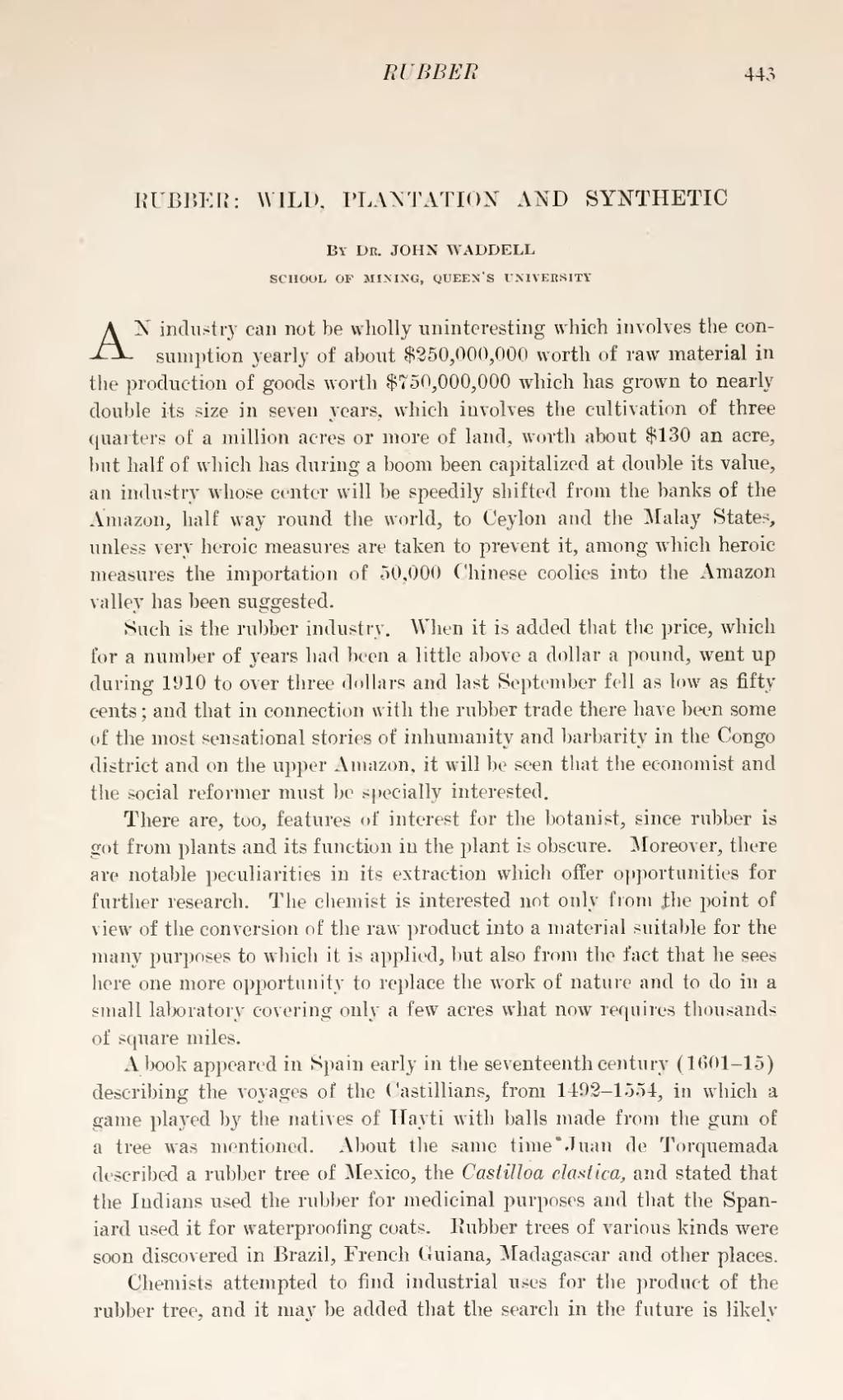| RUBBER: WILD, PLANTATION AND SYNTHETIC |
By Dr. JOHN WADDELL
SCHOOL OF MINING, QUEEN'S UNIVERSITY
AN industry can not be wholly uninteresting which involves the consumption yearly of about $250,000,000 worth of raw material in the production of goods worth $750,000,000 which has grown to nearly double its size in seven years, which involves the cultivation of three quarters of a million acres or more of land, worth about $130 an acre, but half of which has during a boom been capitalized at double its value, an industry whose center will be speedily shifted from the banks of the Amazon, half way round the world, to Ceylon and the Malay State?, unless very heroic measures are taken to prevent it, among which heroic measures the importation of 50,000 Chinese coolies into the Amazon valley has been suggested.
Such is the rubber industry. When it is added that the price, which for a number of years had been a little above a dollar a pound, went up during 1910 to over three dollars and last September fell as low as fifty cents; and that in connection with the rubber trade there have been some of the most sensational stories of inhumanity and barbarity in the Congo district and on the upper Amazon, it will be seen that the economist and the social reformer must be specially interested.
There are, too, features of interest for the botanist, since rubber is got from plants and its function in the plant is obscure. Moreover, there are notable peculiarities in its extraction which offer opportunities for further research. The chemist is interested not only from the point of view of the conversion of the raw product into a material suitable for the many purposes to which it is applied, but also from the fact that he sees here one more opportunity to replace the work of nature and to do in a small laboratory covering only a few acres what now requires thousands of square miles.
A book appeared in Spain early in the seventeenth century (1601-15) describing the voyages of the Castillians, from 1492-1554, in which a game played by the natives of Hayti with balls made from the gum of a tree was mentioned. About the same time Juan de Torquemada described a rubber tree of Mexico, the Castilloa elastica, and stated that the Indians used the rubber for medicinal purposes and that the Spaniard used it for waterproofing coats. Rubber trees of various kinds were soon discovered in Brazil, French Guiana, Madagascar and other places.
Chemists attempted to find industrial uses for the product of the rubber tree, and it may be added that the search in the future is likely
